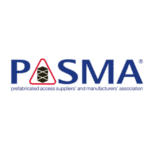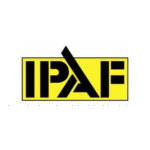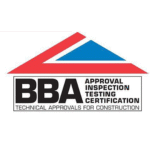- Mon–Fri: 8:30am–5:30pm Sat: Installer appointments available

Render cleaning is an essential aspect of maintaining the aesthetic appeal and structural integrity of buildings. Over time, external walls coated with render are susceptible to the growth of various microorganisms, including fungi. Understanding the significance of render cleaning for protection against fungus is crucial for property owners and managers.
Fungus thrives in damp and humid environments, making render an ideal breeding ground. The porous nature of render provides ample opportunities for moisture retention, creating conducive conditions for fungus growth. Additionally, organic matter such as dirt and debris can accumulate on the surface, further promoting fungal colonization.
Regular render cleaning plays a pivotal role in preventing and eliminating fungus growth. By removing dirt, grime, and organic residues, render cleaning helps to disrupt the fungal ecosystem, thereby inhibiting its proliferation. Moreover, a clean render not only enhances the visual appeal of a property but also extends its lifespan by preventing structural damage caused by fungal infestation.
Mildew: Mildew is a common fungus that appears as black or gray patches on the surface of the render. It thrives in humid conditions and can spread rapidly if left untreated.
Algae: Algae growth on render is characterized by green or brown discoloration. While algae may not pose immediate structural threats, it can detract from the aesthetic appeal of the building.
Identifying early signs of fungus growth is imperative for prompt remediation. Common indicators include discoloration, musty odors, and visible patches of mold or mildew on the surface of render. Regular inspection can help detect fungal infestation at its nascent stage, preventing extensive damage.
Ignoring fungus growth on render can have detrimental consequences for both the property and its occupants. Structural deterioration, compromised indoor air quality, and aesthetic degradation are among the potential outcomes. Moreover, delayed intervention may necessitate costly repairs and remediation efforts.
Enlisting the services of professional render cleaners offers numerous advantages in terms of efficiency and effectiveness.
While professional cleaning is recommended for extensive fungal infestations, property owners can undertake certain DIY methods for routine maintenance.
Proactive measures can help mitigate the risk of fungal infestation on render surfaces.
In response to growing environmental concerns, eco-friendly render cleaning solutions have gained popularity among conscientious property owners.
The cost of render cleaning varies depending on factors such as the size of the property, extent of fungal infestation, and chosen cleaning method. While professional cleaning services may entail higher upfront costs, the long-term benefits in terms of property preservation and occupant health justify the investment.
How often should render be cleaned to prevent fungus growth?
Regular cleaning every 12-18 months is recommended to maintain render surfaces and prevent fungal infestation.
Can I use bleach to clean fungus from render?
While bleach can effectively kill fungi, its harsh chemicals may damage the render surface and surrounding vegetation. It’s advisable to use gentler alternatives.
Is render cleaning safe for the environment?
Many professional cleaning companies offer eco-friendly solutions that are safe for the environment and compliant with regulatory standards.
Will render cleaning remove existing stains and discoloration?
Professional render cleaning services can effectively remove surface stains, discoloration, and fungal residues, restoring the render to its original appearance.
How long does the protective coating applied during professional cleaning last?
The longevity of protective coatings varies depending on factors such as weather conditions and exposure to environmental elements. However, most coatings offer lasting protection for several years with proper maintenance.
Render cleaning is a crucial aspect of property maintenance, particularly for protection against fungal infestation. By implementing regular cleaning routines, preventive measures, and professional services when necessary, property owners can safeguard their investment and ensure the longevity of render surfaces.
How often should render be cleaned to prevent fungus growth?
Regular cleaning every 12-18 months is recommended to maintain render surfaces and prevent fungal infestation.
Can I use bleach to clean fungus from render?
While bleach can effectively kill fungi, its harsh chemicals may damage the render surface and surrounding vegetation. It’s advisable to use gentler alternatives.
Is render cleaning safe for the environment?
Many professional cleaning companies offer eco-friendly solutions that are safe for the environment and compliant with regulatory standards.
Will render cleaning remove existing stains and discoloration?
Professional render cleaning services can effectively remove surface stains, discoloration, and fungal residues, restoring the render to its original appearance.
How long does the protective coating applied during professional cleaning last?
The longevity of protective coatings varies depending on factors such as weather conditions and exposure to environmental elements. However, most coatings offer lasting protection for several years with proper maintenance.
Universal Eco Homes are a highly reputable, family run business with a combined 30 years of experience in the wall and roof cleaning and coating industry. We offer multiple skilled teams who operate across most of the UK. All major credit and debit cards are accepted through a secured gateway system.
We’re proud to be co-founders of the following companies (Universal Renewables LTD Group and UEH Ireland Limited)









Universal Renewables Ltd T/A Universal Eco Homes part of the Universal LTD Group 2025 – Reg. No.12060617 / VAT GB: 328976941
Public Liability | Privacy | Domestic T&Cs | Commercial T&Cs | Insurance & Compliance | Website Design By Koala Digital
Please be aware of companies impersonating or claiming to be in association with us. The ONLY companies that fall under our group are Universal Eco Homes, The Roof Cleaning Experts, East Anglian Spray Foam Removal & Paint My Roof. If you are unsure, please call our number to confirm.
Complaints procedure – please refer to our company T&C policy.